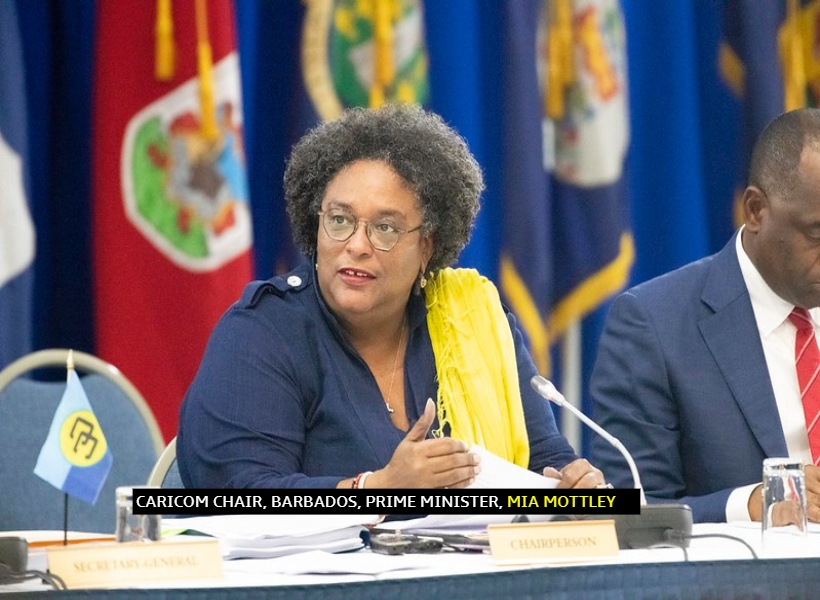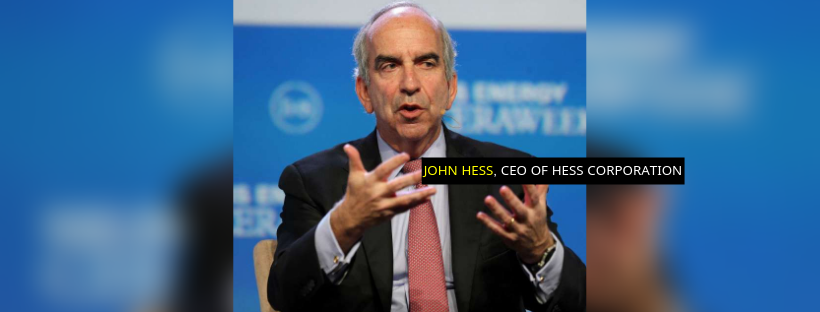Since the emergence of the COVID-19 pandemic, the debate about whether peak oil has already been achieved rages on.
Many industry experts have said that while the thirst for oil will continue, it will never return to pre-2020 levels as the world is on an accelerated climb to using cleaner energy sources. But Hess Corporation, which holds a 30 working interest in the Stabroek Block, contends otherwise.
During a recent engagement on the need for action on climate change, Chief Executive Officer (CEO), John Hess, said that the whole idea of peak demand may still be seen in another decade. But, it all depends on three wild cards— inflation, investment and Iran.
Regarding inflation, Hess said that governments across the world have been putting out numerous fiscal measures to get the economies back on their feet while noting that the soft monetary policies that are out there will more than likely turbo charge consumers and as a consequence, oil demand going into 2022 and beyond.
Referencing Jeff Curry, a reputable Commodities Expert at investment banking giant, Goldman Sachs, Hess said he had noted that the world is going to witness economies going into an inflationary super cycle. It therefore means that this demand-led recovery will also pull oil along with it.
On the investments side, and obviously this relates to supply, the Chief Executive Officer was keen to note that Hess is in a long lead time business where the investments made today are counted in the supply for the next three to five years. Further to this, he noted that the International Energy Agency in its latest World Energy Outlook categorically stated that the world needs to invest US$500 billion to US$600 billion annually to grow global oil supply to keep up with demand. That number in early last year was at US$300B and over the last year, has stepped up. Hess said it therefore means that the world is entering a phase where oil companies will be forced to increase investment to produce more oil.
Speaking to Iran and the Joint Comprehensive Plan of Action (JCPOA), Hess said the world is still watching closely to see what it will take to get Iran back to the table and what the policy of US President, Joe Biden will be on this. He said this is critical as Iran could bring 2 million barrels of oil per day to the market. While the politics of this situation will take some time to work out, this matter along with inflation and investments are key to how one looks into the crystal ball for peak demand in the future the Hess boss said.
ABOUT JCPOA
The Joint Comprehensive Plan of Action (JCPOA)
known commonly as the Iran nuclear deal or Iran deal, is an agreement on the Iranian nuclear programme which was reached in Vienna in July 2015, between Iran and the P5+1 (the five permanent members of the United Nations Security Council—China, France, Russia, United Kingdom, United States—plus Germany) together with the European Union.
The agreement which is over 150 pages long was intended to get Iran to keep its level of uranium enrichment at 3.67 percent, significantly below what is needed to create a bomb. Currently, Iran has a uranium stockpile to create 8 to 10 nuclear bombs. It is a reality that leaves world leaders in deep worry hence the genesis of the agreement. But in 2018, the Trump Administration was not pleased with the terms of the nuclear deal and had pulled out. Export sanctions later followed on Iran, which is the third largest oil producer on the Organization of Petroleum Exporting Countries (OPEC). Prior to the sanctions, Iran was contributing roughly 3.8 million of the 98 million barrels of oil produced daily during that time.
The Biden administration will soon have to make a critical decision on the way forward with the deal and the sanctions that continue to stifle Iran.











